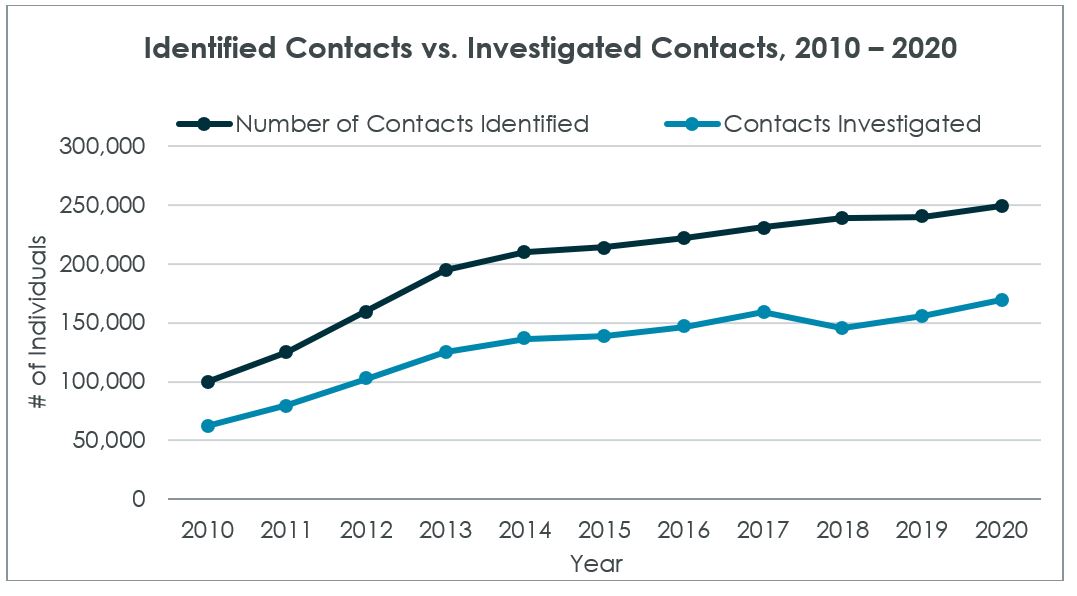By Stephanie Mullen, DrPH, TB DIAH Project Director and Nicole Davis, MPH, JSI Research, Monitoring and Evaluation Advisor
Background
Contact investigation (CI) is a crucial first step in bolstering active case finding efforts as well as identifying eligible contacts for TB preventive treatment (TPT). Up to 5 percent of the contacts of TB cases can have active TB disease. CI efforts work to identify people recently exposed to TB with a high risk of developing TB disease or TB infection and can help reduce the spread of TB in a community. Contacts of TB patients, particularly children under five years of age and people living with HIV, have especially the highest risk.
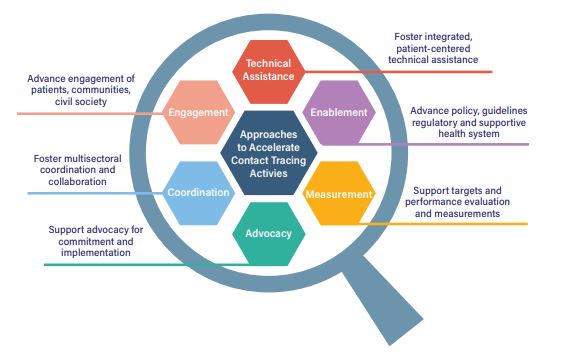
Contact investigations are poorly implemented in many countries due to lack of resources, high costs, shortage of TB screening tools, and lack of regulatory approval of newer treatments for TB infection. Without scale-up of CI interventions, achieving the United Nations High Level Meeting (UNHLM) targets for preventing TB will be challenging. Now is the time to ensure CI activities are expanded within the TB prevention and care program activities of priority high TB burden countries.
To support this effort, USAID released the Programmatic Implementation of TB Contact Investigation (PI-TBCI) Package of Tools for Priority High Burden TB Countries, in August 2020. This toolkit provides implementation guidance and adaptable tools for relevant stakeholders of USAID and its implementing partners.
M&E Framework for Contact Investigations
Systematic and routine monitoring and evaluation (M&E) of CI activities is critical to understand whether the program is being implemented properly. M&E allows national TB programs (NTPs) to measure the impact of CI on TB case finding and TB incidence over time. It further helps NTPs to identify existing challenges and gaps related to CI efforts and enables them to find responsive and effective solutions in order to continuously improve their CI strategy.
An important component of the PI-TBCI toolkit and one of its ten strategic interventions is developing or strengthening M&E tools for data collection, analysis, sharing of key TBCI indicators and program-based operational research to generate evidence and inform policy. The toolkit highlights three key activities related to strengthening TBCI M&E that should be implemented to ensure CI success:
– Develop an M&E plan, including process indicators to track the progress of the different stages of the PI-TBCI implementation plan and activities.
– Ensure data collection and inclusion from public and non-public service providers, including the private sector and civil society organization into the national system.
– Develop patient and program monitoring forms and tools, such as household contact investigation forms.
Once these important interventions are in place, it is essential to ensure that data are analyzed and presented in a way that reaches key audiences and leads to data use and action. For example, one of the 10 core indicators for USAID’s Performance-based Monitoring and Evaluation Framework is Contact Investigation Coverage, which is the number of contacts of bacteriologically confirmed pulmonary TB patients who were evaluated for active and latent TB, out of the total number of eligible contacts. The total number of eligible contacts identified can be compared to the number of contacts investigated or evaluated to determine the gap in overall CI coverage. This is something that can be analyzed as a trend over time or compared between regions to better understand contact investigation performance. Comparisons with a country’s CI coverage targets will provide the impetus to further strengthen the implementation of CI strategies within an NTP.
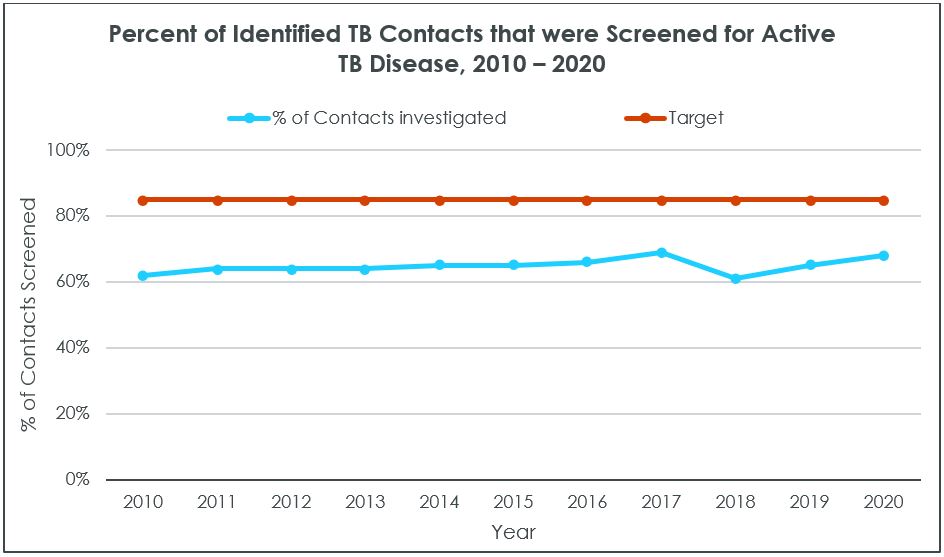
Another comparison could be made between the number of contacts investigated per index TB case. Simply charting the trend of the average number of contacts investigated per index case can also give an understanding about the effectiveness of the contact investigation efforts.
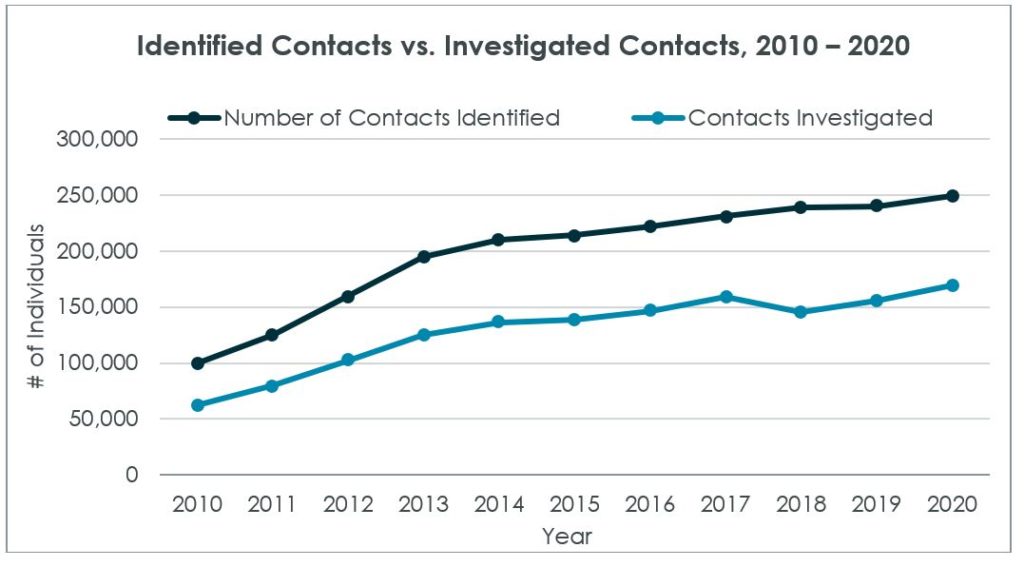
Data on CI coverage will also help countries monitor efforts to enroll eligible contacts on TPT. For example, CI coverage data can be viewed in conjunction with the number of eligible contacts put on TPT for TB infection. The data visualization below breaks down the categories of TB contacts and, within the last two columns, plots the number of contacts that were initiated on TPT and the number that completed a full TPT regimen.
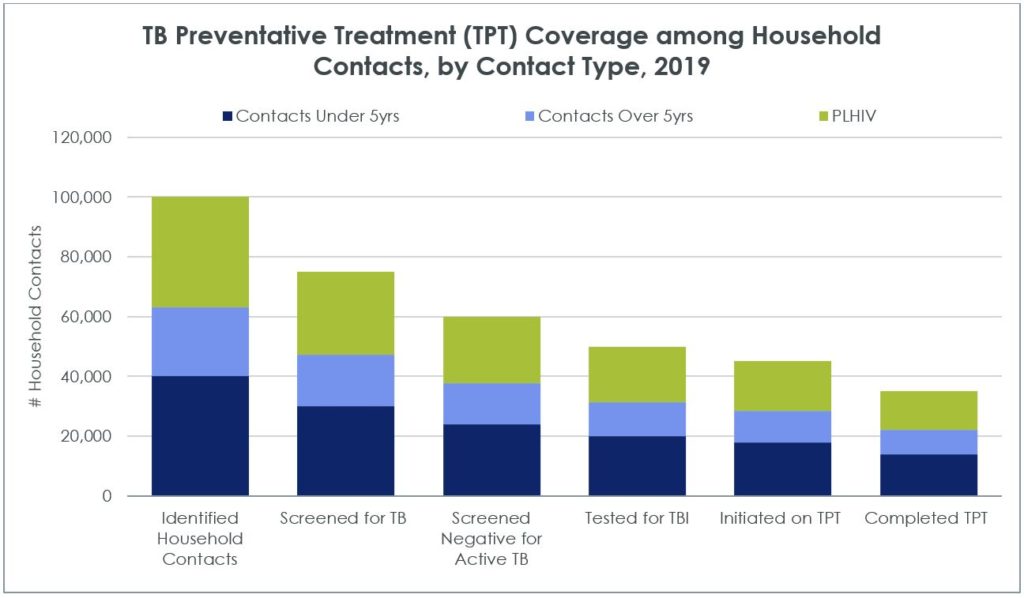
With USAID’s toolkit, countries will be able to track their CI efforts through the help of multiple indicators and routine analysis. To ensure the maximum benefit from CI M&E efforts, data reported quarterly or semiannual will improve the timeliness of data for decision making and ensure that data is being used to strengthen CI interventions. This data can also be collected at the subnational level and used to learn from the geographic distribution of contacts and give countries comprehensive insights to the CI interventions being implemented.
Note: The graphs shown are meant to provide examples and do not use real data.
